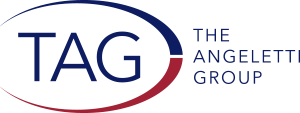Like many fundraisers, we eagerly awaited Giving USA Foundation’s Annual Report on Philanthropy, planning to use the findings from 2019 patterns to inform predictions and trends for the rest of the year. No one could have imagined just how drastically the world—and in turn, our world of philanthropy—would change in March. It may feel irrelevant to review last year’s fundraising data when we consider all that has happened in the first half of this year. However, a look back at 2019—the strongest year of charitable giving yet—is germane as fundraisers consider multi-year trends to plan for moving forward and adapting to the current uncertainties.
In 2019, Americans gave $449.6 billion to charity, an increase of 4.2% in current dollars. Furthermore, individual giving increased by 2.8% from 2018. Of course, despite these positive trends, there are many unknowns and concerns facing our industry today.
Giving USA advances many findings and we encourage you to review insights and reports here. Below, TAG outlines the Top 10 highlights of this year’s report, and what these stats might mean for the future of philanthropy.
- For the third year in a row, giving hit an all-time high. The average year-to-year change in total giving between 1979 and 2019 was an increase of $10.16 billion, making the current-dollar change in total giving between 2018 and 2019 larger than the 40-year average. As we know from history, despite the vicissitudes of our economy, people endure good and bad times and continue to give.
- Individual giving remains the largest source of contributions (69%). When you consider that bequests are made by individuals (10% of total giving), and a majority (64%) of foundations (17% of total giving) are funded and run by individuals, including family foundations, individuals represent 95% of total giving.
- Individual giving was bolstered by a robust economy: a strong S&P 500, an increase of 4.3% in disposable personal income, and 4.1% GDP growth; all contributed to strong charitable giving.
- Grantmaking by independent, community, and operating foundations increased 2.5% from 2018 to an estimated $75.69 billion in 2019.
- Giving by independent foundations increased 2.2%;
- Giving by operating foundations increased 1.3%; and
- Giving by community foundations increased 5.6%
- Giving by corporations increased by an estimated 13.4% in 2019 from 2018, totaling $21.09 billion, a significant percentage increase compared to 2018 from 2017.
- Giving to religious organizations continues to decline as a share of total giving to recipient organizations since the five-year period beginning in 1985, when it reached 56.4% of the total. In the last five-year period, 2015–2019, religious giving comprised 30.5% of the total.
- Giving to education has been at its strongest in the last four five-year periods, comprising 14% of all giving in 2019.
- Giving to the health subsector has remained relatively stable, comprising 8-10% of total giving over the last four decades.
While reviewing stats from our strongest year ever may now seem surreal in the post-COVID economy, the report illuminates key trends that affect charitable giving. Namely, understanding the impact of a strong economy, we must consider the inverse as Americans face the highest unemployment rates ever and an increasingly volatile stock market. Yes, we began 2020 optimistically, however, there is no question that economic, political, and social factors will—and already have—affect charitable giving this year and in the years to come.
Development professionals are rising to the challenge, responding with new and creative ways to engage donors and prove their value to the community. Like past economic distresses, most notably the Great Recession, TAG believes philanthropy as an institution will persevere and continue to play an important role—especially in serving those in need. In fact, that is evidenced in Giving USA’s comprehensive year-over-year giving analysis, which shows an increase in giving across the board following initial dips in 2008-09 as a result of the recession. Philanthropy is resilient, to be sure, and TAG believes this will be proven again, especially given the way many foundations and individuals have stepped up to respond to pressing needs related the pandemic, healthcare, systemic inequalities, and social justice.


